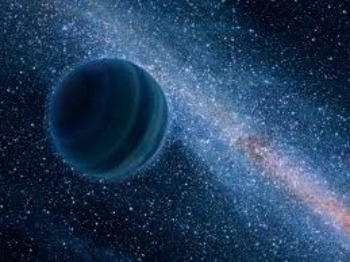We know that our planet is an awesome place for the mere fact that it can support different life forms. And it’s also a blessing that we manage to co-exist despite our diversity. As the more superior species, mankind continues to explore the peaks of the mountains and the depths of the oceans but still some mysteries remain. Despite all these mysteries that the world has in store for us, nothing piques our curiosity more than the vast space outside our planet.
 Do other forms of life exist? Can we survive in the harsh environment of the space? These are just some of the questions that fill our minds but still answers seem to elude us. For centuries, great minds tried their best to seek for answers and gain more understanding about our solar system and other galaxies farther from us. But are we really close to finding the answers with the help of modern technology or are we just barely scratching the surface of even stranger things to come.
Do other forms of life exist? Can we survive in the harsh environment of the space? These are just some of the questions that fill our minds but still answers seem to elude us. For centuries, great minds tried their best to seek for answers and gain more understanding about our solar system and other galaxies farther from us. But are we really close to finding the answers with the help of modern technology or are we just barely scratching the surface of even stranger things to come.
The skies above the European Southern Observatory’s Paranal Observatory resemble oil on water, as greens, yellows, and blues blend to create an iridescent skyscape.
The rocky, barren landscape below evokes an image of an alien world, perfectly complementing the shimmering cosmic display occurring above. The main feature is our beautiful home galaxy, the Milky Way, arching across the Chilean night sky and framing the awestruck observer on the left. The light from billions of stars combines to create the Milky Way’s glow, with huge clouds of dark dust blocking the light here and there and creating the dark and mottled pattern we observe. A natural effect known as airglow is responsible for the swathes of green and orange light that appear to be emanating from the horizon.
ESO’s Very Large Telescope can be seen as a speck in the distant background to the right atop Cerro Paranal. Its neighbour, slightly lower down, is the Visible and Infrared Survey Telescope for Astronomy (VISTA).
(Via: https://astronomynow.com/2017/04/16/within-reach/)
We try to develop technologies that will allow us to see the world outside in a different light and find out once and for all whether living outside our planet is actually possible. Our planet is aging and the threat of global warming and climate change has caused some people to panic but experts are doing their best to find out as much as they can the soonest time possible.
Do you believe there’s life to be found on these other planets?
First, let me correct you. “Believe” is not a scientific term, as a scientist you don’t need to “believe,” you have to experiment. You can try and search for suitable planets that could sustain life, if you have enough money and technology. NASA had the idea for the TPF, Terrestrial Planet Finder, which was a satellite that was considered to difficult and expensive to develop. Eventually, it will be done because this is a question we need to answer. It could take 10 or 20 years and won’t be easy, but I believe we will get there.
When you have all the good conditions, chemistry and physics could explain how life forms. In the lab it’s not possible to test the existence if life exists out there, like in the ice layer of Europa, one of Jupiter’s four moons, the only way to do it is to observe.
And it seems as if all their hard work are paying off with the discovery of an exoplanet (a planet orbiting another star outside our own solar system) with evidence of an atmosphere raises the hope of experts that it may possibly support human life.
For the first time, scientists have detected an atmosphere around a planet beyond our solar system that’s just a little bit larger than Earth.
The exoplanet GJ 1132b, which orbits the dwarf star GJ 1132, is located about 39 light-years away from Earth. It has a radius about 1.4 times that of Earth and is 1.6 times Earth’s mass, according to the new study. When the planet was first discovered, researchers called it a potential Venus twin because it’s a rocky world with a very high surface temperature — and now, they’ve found that the planet and Venus might have a thick atmosphere in common, too (although it would have a different composition).
While observers have pinpointed atmospheres around much larger, Jupiter-like gas giants orbiting other stars — and a larger super-Earth, about eight times Earth’s mass — this is the first evidence of an atmosphere around an exoplanet that’s near Earth’s size, the study’s researchers said. Researchers can use planets’ atmospheres to try and determine if these worlds are suitable for life as we know it on Earth, or even to identify potential traces of life recorded there.
(Via: http://www.space.com/36368-atmosphere-found-on-nearly-earth-size-planet.html)
There is still much that we need to know about life outside our planet. Despite our best efforts over the past few decades, there are still a lot of mysteries clouding the vast space and we are unsure whether we will be able to uncover all the answers in our lifetime.
Many are desperate to find out whether the human race can survive in another planet once Earth can no longer support existing life forms. However, it is still us to blame for the planet’s gradual destruction because of our abuse and misuse of Earth’s resources for our comfort and convenience. Nevertheless, it would be great if man can overcome the challenges of astronomical studies and make it possible for us to finally leave Earth for good, if worst comes to worst.
